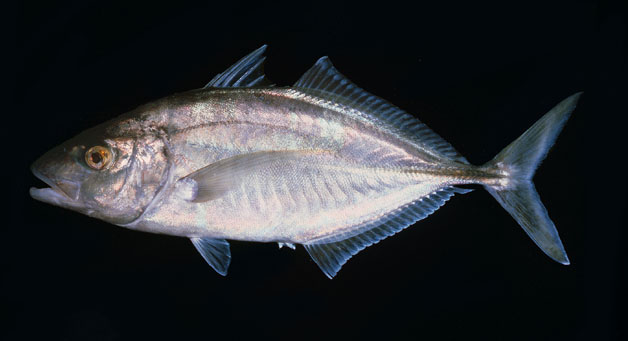| Carangidae (Jacks and pompanos), subfamily: Caranginae |
| 50 cm FL (male/unsexed) |
|
reef-associated; marine; depth range 60 - 226 m |
| Indo-Pacific: Gulf of Oman, East Africa, southern Japan, Hawaii, the Arafura Sea (Ref. 9819), Australia, New Zealand, and Easter Island. Southeast Atlantic: southeast coast of South Africa (Ref. 3197). Also reported from the northern Red Sea (Refs. 13277, 58021). |
|
Dorsal spines (total): 9-9; Dorsal soft rays (total): 23-25; Anal spines: 3-3; Anal soft rays: 21-24. Bluish grey to green above, silvery white below; soft dorsal and anal fins with submarginal brownish band, fin lobes white distally (Ref. 3197). LL with 22-23 scutes. |
| Adults are found on the continental shelf and slope (Ref. 30573). Benthopelagic (Ref. 58302). Utilized as a food fish (Ref. 3287). Cultured and released for fishery in Japan. Minimum depth reported taken from Ref. 9773. |
|
Least Concern (LC); Date assessed: 06 March 2015 Ref. (130435)
|
| harmless |
|
Museum: WAM P.26182-010. Known from Houtman Abrolhos Ils in Western Australia, including the coastal and oceanic areas, to the Arafura Sea in the Northern Territory (Ref. 7300). Also Ref. 127228. |
Source and more info: www.fishbase.org. For personal, classroom, and other internal use only. Not for publication.

